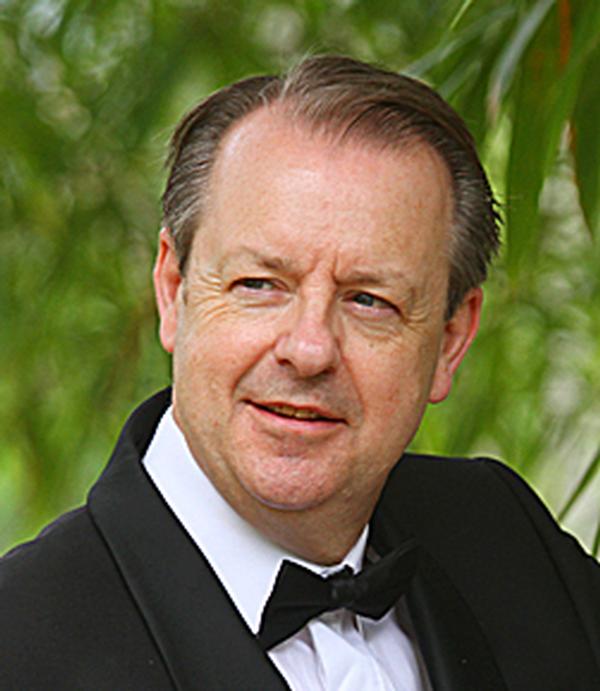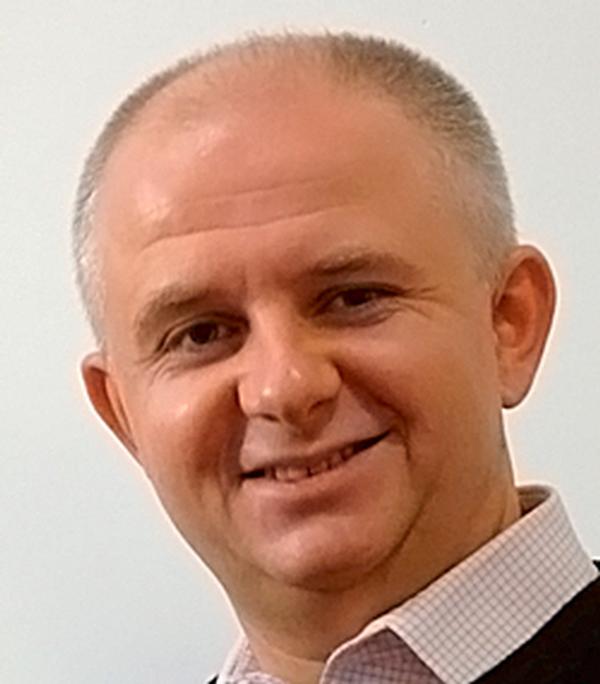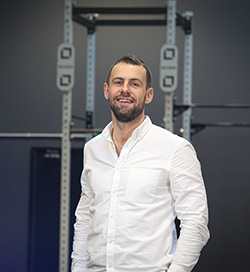features
Neuromarketing
Could this neuroscience-inspired branch of market research hold the key to finding out what spa consumers really want? Rhianon Howells investigates
Understanding what customers want, think and feel is at the heart of great service – but in reality we all know that gauging exactly what this might be is not always as easy as it sounds. Increasingly, research shows that a large part of consumer decision-making takes place in the non-conscious part of the mind and is influenced by factors we’re not even aware of.
In an attempt solve this conundrum and to unlock consumers’ true feelings about everything from ad campaigns to products and experiences, businesses are turning to neuromarketing – the application of neuroscience technologies to the field of market research.
In its infancy neuromarketing focused primarily on expensive methods that monitored brain activity, including functional magnetic resonance imaging (fMRI), which focuses on blood flow, and electroencephalography (EEG), which detects electrical activity. But over time the toolkit has widened to include eye-tracking technology, which records where customers direct their visual attention, and facial coding technology, which captures and identifies the emotions behind fleeting facial expressions.
Most recently, there’s been a move towards online methods, including web-based versions of eye-tracking and facial coding, as well as psychology-based implicit-association tests. The latter assesses the strength of our unconscious associations between concepts (eg fat/thin people) and evaluations (eg good/bad) or stereotypes (eg athletic/clumsy).
Less intrusive and more affordable methods of neuromarketing opens up its possibilities to a new audience, including the spa industry. Spa Business identified it as a trend to watch in its 2014 Spa Foresight™ (see SB14/4 p30). However, not everyone believes it’s worth the investment, with detractors arguing that the science behind it is tenuous as best.
We ask four experts if neuromarketing lives up to the claims and how the spa industry might benefit from it.
Dr Eamon Fulcher,
Head of research and development,
Neurosense

Neuromarketing methods include the use of brain scans (typically fMRI), EEG, biometrics, facial coding, eye-tracking and reaction-time testing. These offer an alternative to interviews or online questionnaires, which many market researchers now realise are problematic – not only because those answering have no real motivation, but also because people may not know exactly how they feel about a specific product or service, or may find it difficult to put into words. People are not rational when it comes to making a purchase, relying instead on emotions, feelings and intuition.
Different neuromarketing methods provide specific bits of information. If someone was asked to watch an advert, biometric measures could indicate how emotional they were; a brain scan could show the strength of their response; eye-tracking could reveal what got the most visual attention and facial coding could indicate what feelings they had.
These technologies have been validated by thousands of academic studies, but each has strengths and weaknesses. Brain scanning was once considered the purest neuromarketing method, but in terms of the insights it can yield there are less expensive methods that are equally efficient. One of these is the implicit reaction-time test (IRT), which has its origins in cognitive psychology. It’s a relatively simple technique, but one that is very difficult to fake, and a powerful measure of gut reactions.
Neuromarketing has a remarkably broad reach in terms of the research questions it can address. Within the spa industry, these might include: What do ‘wellness’, ‘health’ and ‘spa’ mean to consumers? What do consumers expect from a spa? How can a spa’s brand image be improved? What are the emotional and psychological benefits of a spa experience? How can you market your business most effectively? Most of these questions can be answered using IRTs.
Typically, neuromarketing is more expensive than traditional forms of market research, but the availability of online tests has dramatically reduced costs. And companies not using neuromarketing may be missing out on valuable insights: our clients tell us that our techniques provide them with a much deeper understanding of their brands than traditional methods.
Eamon Fulcher has more than 15 years experience in developing online testing and e-learning tools. Established in 1999, Neurosense is a worldwide neuromarketing research agency whose clients include the BBC, American Express and Coca-Cola.
Details: www.neurosense.com
Roger Dooley,
Author,
Brainfluence: 100 Ways to Persuade and Convince Consumers with Neuromarketing

Simply asking people questions in a survey doesn’t yield accurate results. This is particularly true for ‘why?’ and ‘will you?’ questions. Neuromarketing includes a wide variety of techniques designed to help us understand what customers are really thinking. While there hasn’t been a lot of academic research validating these techniques, this is starting to emerge. Temple University in Philadelphia just published a study showing that fMRI predicted the success of ad campaigns better than traditional methods.
Neuromarketing can be used to evaluate consumers’ subconscious reactions to everything from television commercials to print ads, packaging and even products themselves. In terms of how this might add value to the spa industry, deciding to go to a spa is based mostly on emotion – it’s not a necessity, like food or transportation, and there are luxury connotations. All this suggests that appealing to a customer’s rational side by advertising features and benefits will be less effective than an emotional appeal. Neuromarketing can be used to uncover the emotional drivers that are most effective.
To my knowledge, neuromarketing has not yet been used to measure customer responses to experiences, such as a hotel or spa visit. Most hospitality firms use a guest survey for this, but it would be interesting to add a neuromarketing study to compare results. Less expensive techniques such as facial coding or implicit-association testing might work well here. For example, if a guest was uncomfortable during a spa treatment, they might not reveal that in a written survey, but a neuromarketing test might pick up on those feelings.
With more providers and new techniques now available, the cost of neuromarketing studies could be in the lower thousands depending on the technologies used. Return on investment is impossible to predict, as like any other market research project it’s totally dependent on the value of the insights obtained. But as costs come down I think more industries will add neuromarketing alternatives to simple consumer surveys.
Brainfluence author Roger Dooley is also the founder of marketing consultancy Dooley Direct.
Details: www.rogerdooley.com
Brainfluence author Roger Dooley is also the founder of marketing consultancy Dooley Direct. Details: www.rogerdooley.com
"If a guest was uncomfortable during a spa treatment, they might not reveal that in a written survey, but a neuromarketing test might pick up on those feelings"
Duncan Smith,
Managing director,
Mindlab International

Much of our decision-making is based on associations we’re not consciously aware of. People are not as rational as they think they are and asking them to explain their behaviour and how they might act in the future is only going to tell part of the story. Neuromarketing can be used to bridge this gap and shed light on why we behave the way we do.
While there’s no guarantee that a person’s emotional response will accurately predict their behaviour, it’s infinitely more reliable than just asking them. Relying on surveys and focus groups alone is limiting because people are so heavily influenced by factors outside their conscious awareness. Neuromarketing can give insight into the real drivers of consumer behaviour, including our subconscious associations and emotions – something which is essential throughout the marketing process, from testing initial design ideas to finding out why a brand is not performing well.
Just as with traditional market research, neuromarketing companies are moving away from lab methods towards online tests. Some use online eye-tracking and facial coding, while others, including Mindlab, use established psychological measures such as implicit-association testing. This allows tests to be run faster on more participants at a lower price.
Most neuromarketing applications come from academia, are backed up by peer-reviewed studies and based on sound scientific principles. But many applications have in the past been oversold, and when over-excited marketers with little scientific training get hold of the technology, it can be misused.
To get the best results a combination of measures is often what’s needed. For example, while EEG can pinpoint where people are paying attention, it’s not good at distinguishing between positive and negative responses. If you want to identify specific emotions, facial coding may be a more sensible approach, though to understand people’s subconscious feelings, implicit-association testing is more reliable.
Neuromarketing is easier to apply in business-to-consumer environments, making it ideally suited to the hospitality and spa industries. One low-cost application might be to incorporate implicit-association tests into online customer satisfaction surveys; Mindlab is currently speaking to a five-star hotel in London about doing just this.
Smith is a biological sciences graduate and worked in private education and corporate research before heading up Mindlab. Clients of the neuromarketing firm include Innocent Drinks and Lloyds Bank.
Details: www.themindlab.co.uk
"Many applications have in the past been oversold, and when over-excited marketers with little scientific training get hold of the technology, it can be misused"
Mike Page,
Cognitive psychology lecturer,
University of Hertfordshire, UK

I’m sceptical about the claims made for neuromarketing because I’ve never seen any proper evidence that it works. My first issue is that the term ‘neuromarketing’ is applied to a number of technologies that are not neuro-measures at all. While fMRI and EEG do look at brain activity, techniques such as facial coding, eye-tracking, skin conductance and biometrics do not.
My second issue is that it’s based on the unproven premise that monitoring people’s brain activity will give you unique insight into how they’re likely to behave. But in this situation, surely the most logical course of action is to look not at people’s brain patterns, but at how they behave?
For example, in one neuromarketing experiment, supermarket shoppers wore EEG headsets to see if the data collected correlated with their purchasing decisions. But if you want to understand someone’s purchasing decisions, why not just look in their trolley? I fail to see how monitoring a small number of people’s brains – and the technology is so expensive it can only be a small number – can predict how a much larger number of people might behave, more accurately than getting a middle-sized number of people to actually demonstrate the behaviour. Rather than putting 30 people in a brain-scanner to monitor their response to a set of adverts, why not let 300 people watch those adverts, then set them lose in a controlled environment and see what they buy?
My final point is that while fMRI and EEG can show when someone is having an emotional response, it’s impossible to be sure what the mental content of that response is. A few years ago there was a claim that people were literally in love with their iPhones because, in fMRI testing, the sound of their phone ringing made the part of their brain called the insula light up, just as it did when they saw their girlfriend or boyfriend. The trouble is, the insula lights up for loads of things! Its activation is simply not specific enough for it to be a useful diagnostic tool – unless good evidence shows otherwise, of course. I’m still waiting.
Mike Page is a cognitive psychologist. As well as research and teaching, he’s involved with several innovative projects, including The Cube Project.
Details: www.cubeproject.org.uk
Rhianon Howells is a business journalist and the consulting editor of Spa Business magazine
Email: [email protected]



































































